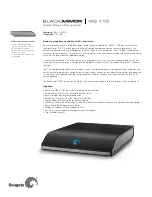
About local file security and Flash Player
687
Access network only
To set this permission level, select Publish Settings > Flash, and then select Access Network
Only from the Local Playback Security pop-up menu. Local SWF files with network access
can read from a server if the server contains a cross-domain policy file with
<allow-access-
from-domain= “*”>
. Local SWF files with network access may cross-script other SWF files if
the other SWF files, which are being accessed, contain
System.security.allowDomain(“*”)
. A local SWF file with network access can be cross-
scripted by network SWF files if the local SWF file contains
allowDomain(“*”)
. The SWF
file can never read from local files. In some cases, the type of SWF file affects the access. For
information, see allowDomain (
security.allowDomain method)
in the
ActionScript
2.0 Language Reference
.
The wildcard (
*
) value indicates that
all
domains, including local hosts, are allowed access. Be
certain you want to provide this broad level of access before using the wildcard argument.
Without any of these permissions, local SWF files with network access can communicate only
with other local SWF files that have network access, and they can send data to servers (using
XML.send()
, for example). In some cases, access is allowed if the HTML file is trusted.
Access file system and network
This level is the highest level of permission. A local SWF file that has these permissions is a
trusted local
SWF file
. Trusted local SWF files can read from other local SWF files, interact
with any server, and write ActionScript for other SWF files or HTML files that have not
explicitly forbidden the file permission (for example, with
allowScriptAccess="none"
).
This level of permission can be granted by the user or Flash developer in the following ways:
■
Using the Global Security Settings panel in the Settings Manager.
■
Using a global configuration file.
A configuration file can be installed with the SWF file, created by a Flash developer, or
added by an administrator (for all users or the current user) or any Flash developer (for the
current user).
For more information on configuration files and the Global Security Settings panel, see
“About Flash Player security settings” on page 681
and
“Specifying trusted files using the
Settings Manager” on page 688
and
“Creating configuration files for Flash development”
on page 690
.
Summary of Contents for FLASH 8-LEARNING ACTIONSCRIPT 2.0 IN FLASH
Page 1: ...Learning ActionScript 2 0 in Flash...
Page 8: ...8 Contents...
Page 18: ...18 Introduction...
Page 30: ...30 What s New in Flash 8 ActionScript...
Page 66: ...66 Writing and Editing ActionScript 2 0...
Page 328: ...328 Interfaces...
Page 350: ...350 Handling Events...
Page 590: ...590 Creating Interaction with ActionScript...
Page 710: ...710 Understanding Security...
Page 730: ...730 Debugging Applications...
Page 780: ...780 Deprecated Flash 4 operators...
Page 830: ...830 Index...
















































